Sulcotrione
Synonym(s):2-[2-Chloro-4-(methylsulfonyl)benzoyl]-1,3-cyclohexanedione
- CAS NO.:99105-77-8
- Empirical Formula: C14H13ClO5S
- Molecular Weight: 328.77
- MDL number: MFCD01632349
- EINECS: 278-636-5
- SAFETY DATA SHEET (SDS)
- Update Date: 2024-12-18 14:15:30
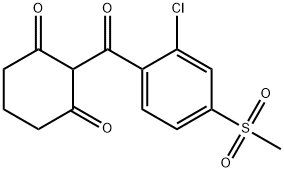
What is Sulcotrione?
The Uses of Sulcotrione
Herbicide.
Definition
ChEBI: An aromatic ketone that is cyclohexane-1,3-dione substituted by a 2-chloro-4-(methylsulfonyl)benzoyl group at position 2.
Pharmacology
Mode of action studies with sulcotrione first led to the identity of HPPD as a highly effective herbicide target site. Early observations showed that a related compound caused increased levels of tyrosine in the plasma and urine of treated rats (12). Further studies showed that one of the tyrosine catabolism enzymes, 4-hydroxypyruvate dioxygenase, was inhibited by cyclohexanediones (13,14)—this enzyme being required for the formation of quinones, such as plastoquinone in plants (12,15,16). Inhibition results in the perturbation of carotenoid synthesis and inhibition of photosynthetic electron transport (16).
Metabolism
Sulcotrione is readily absorbed through the leaves and
via the roots. In the soil, metabolism involves ring opening
of the cyclohexanedione, eventually to give the
corresponding benzoic acid (17) and, finally, CO2 (8).
In the soil, the half-life of sulcotrione can vary
considerably (between 15 days in loamy sand and 72 days
in fine loam), depending on a number of factors, especially
the soil organic matter content (18,19).
Properties of Sulcotrione
| Melting point: | 139° |
| Boiling point: | 574.5±50.0 °C(Predicted) |
| Density | 1.428±0.06 g/cm3(Predicted) |
| storage temp. | Inert atmosphere,Room Temperature |
| solubility | Chloroform (Slightly), Methanol (Slightly) |
| form | Solid |
| form | neat |
| pka | 3.22±0.50(Predicted) |
| color | White to off-white |
| Merck | 13,8979 |
| BRN | 8155739 |
| EPA Substance Registry System | 1,3-Cyclohexanedione, 2-[2-chloro-4-(methylsulfonyl)benzoyl]- (99105-77-8) |
Safety information for Sulcotrione
| Signal word | Warning |
| Pictogram(s) |
 Exclamation Mark Irritant GHS07  Health Hazard GHS08  Environment GHS09 |
| GHS Hazard Statements |
H317:Sensitisation, Skin H373:Specific target organ toxicity, repeated exposure H410:Hazardous to the aquatic environment, long-term hazard |
| Precautionary Statement Codes |
P202:Do not handle until all safety precautions have been read and understood. P260:Do not breathe dust/fume/gas/mist/vapours/spray. P273:Avoid release to the environment. P280:Wear protective gloves/protective clothing/eye protection/face protection. P302+P352:IF ON SKIN: wash with plenty of soap and water. P308+P313:IF exposed or concerned: Get medical advice/attention. |
Computed Descriptors for Sulcotrione
| InChIKey | PQTBTIFWAXVEPB-UHFFFAOYSA-N |
New Products
Tert-butyl bis(2-chloroethyl)carbamate (S)-3-Aminobutanenitrile hydrochloride N-Boc-D-alaninol N-BOC-D/L-ALANINOL N-octanoyl benzotriazole 4-Hydrazinobenzoic acid 3,4-Dibenzyloxybenzaldehyde 1,1’-CARBONYLDIIMIDAZOLE R-2-BENZYLOXY PROPIONIC ACID 1,1’-CARBONYLDI (1,2-4 TRIAZOLE) 4-HYDROXY BENZYL ALCOHOL 3-NITRO-2-METHYL ANILINE (2-Hydroxyphenyl)acetonitrile 4-Bromopyrazole 5-BROMO-2CYANO PYRIDINE 5,6-Dimethoxyindanone 5-broMo-2-chloro-N-cyclopentylpyriMidin-4-aMine 4-methoxy-3,5-dinitropyridine 2-(Cyanocyclohexyl)acetic acid 2-aminopropyl benzoate hydrochloride 1-(4-(aminomethyl)benzyl)urea hydrochloride tert-butyl 4- (ureidomethyl)benzylcarbamate diethyl 2-(2-((tertbutoxycarbonyl)amino) ethyl)malonate Ethyl-2-chloro((4-methoxyphenyl)hydrazono)acetateRelated products of tetrahydrofuran

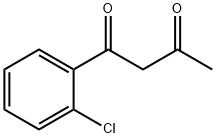
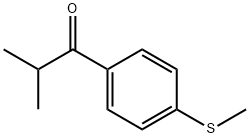
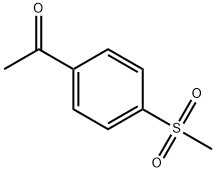
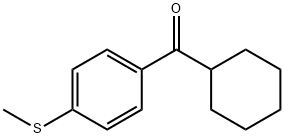
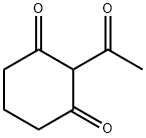

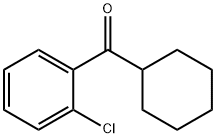
You may like
-
 Sulcotrione 98% (HPLC) CAS 99105-77-8View Details
Sulcotrione 98% (HPLC) CAS 99105-77-8View Details
99105-77-8 -
 Sulcotrione CAS 99105-77-8View Details
Sulcotrione CAS 99105-77-8View Details
99105-77-8 -
 55441-95-7 99%View Details
55441-95-7 99%View Details
55441-95-7 -
 N-Vinylformamide 99%View Details
N-Vinylformamide 99%View Details
13162-05-5 -
 Chloro Uracil 1820-81-1 99%View Details
Chloro Uracil 1820-81-1 99%View Details
1820-81-1 -
 2-ethyl-6-methyl-3-hydroxypyridine succinate 99%View Details
2-ethyl-6-methyl-3-hydroxypyridine succinate 99%View Details
127464-43-1 -
 2-ETHYLPYRIDINE 100-71-0 99%View Details
2-ETHYLPYRIDINE 100-71-0 99%View Details
100-71-0 -
 181228-33-1 (S)-Methyl 3-amino-2-((tert-butoxycarbonyl)amino)propanote Hydrochloride (DAP-OMe. HCl) 99%View Details
181228-33-1 (S)-Methyl 3-amino-2-((tert-butoxycarbonyl)amino)propanote Hydrochloride (DAP-OMe. HCl) 99%View Details
181228-33-1